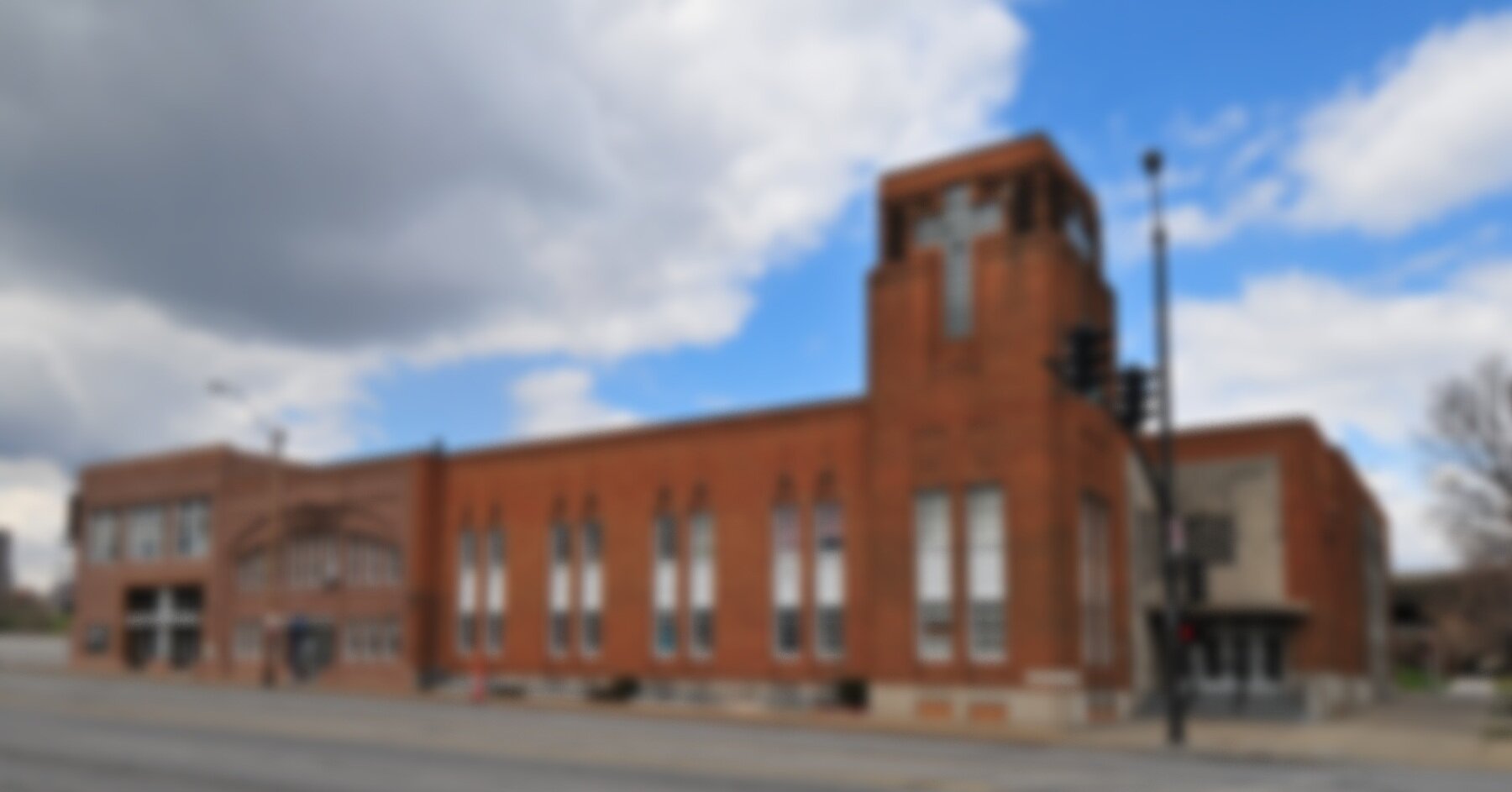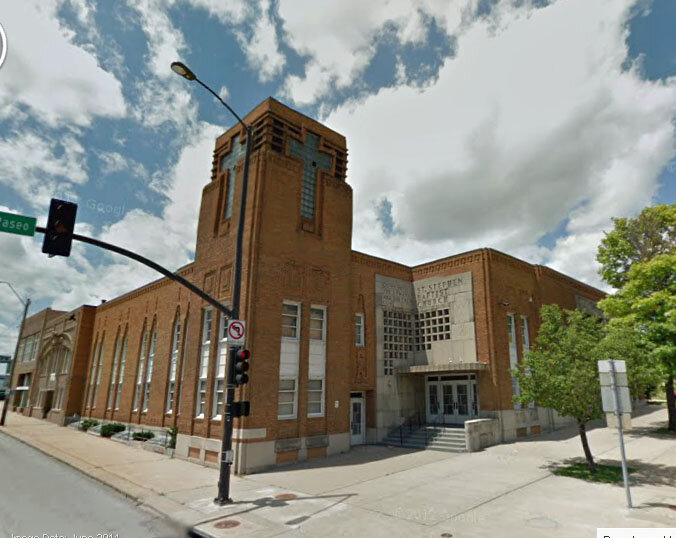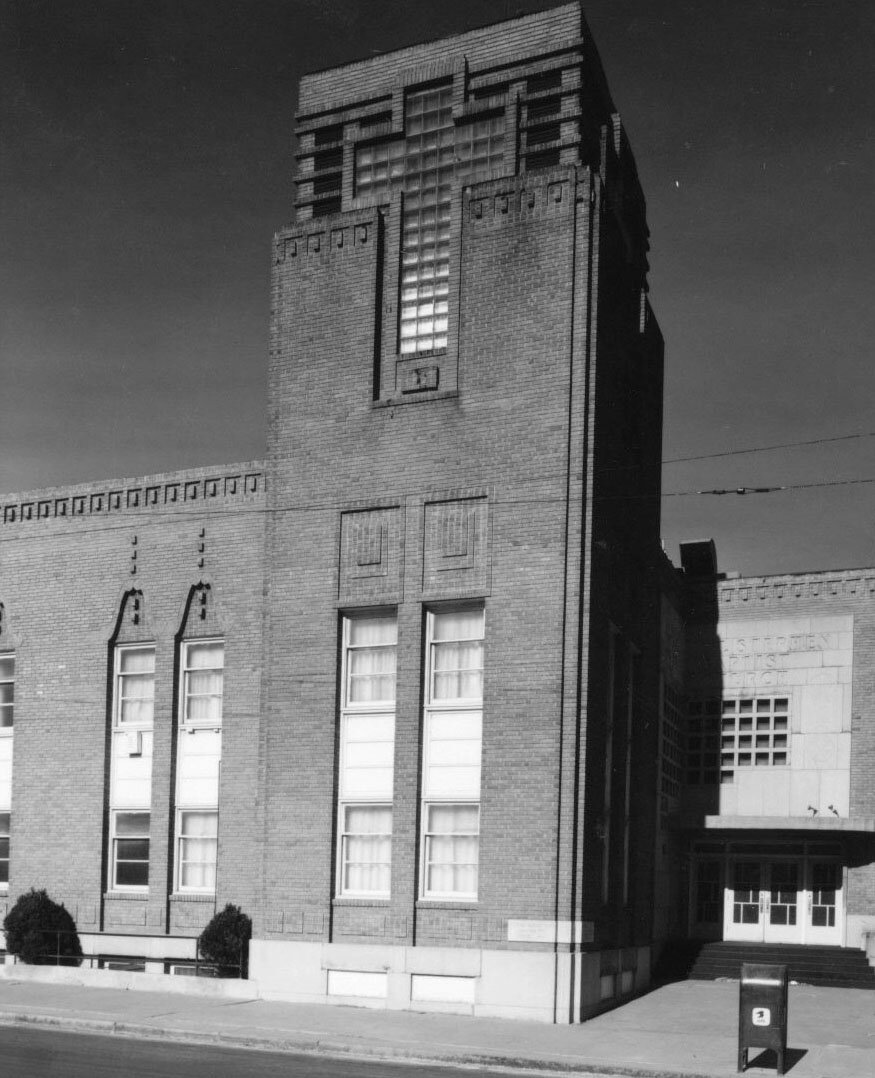
St. Stephen Baptist Church
1414 East Truman Road
ST. Stephen BAPTIST CHURCH
On April 11, 1957 Martin Luther King Jr. visited St. Stephens and delivered a speech titled “Progress in the Area of Race Relations.” This buff brick church, modern in style, has been a place of worship for one of the nation's largest black Baptist congregations. The church was established in 1903 when Rev. J. W. Hurse, its founder, held services from his wagon. In 1921, members moved to a structure at 910 Harrison.
The church on Harrison Street was destroyed by fire in 1938. Rev. R. J. Jordan, then pastor, purchased the Paseo Dance Hall located at Truman Road and The Paseo in 1941. The hall was reconditioned and served as the church until the present structure was constructed on the same site in 1945.
St. Stephen's congregation remains an active force in the black community. St. Stephen Baptist Church, 1414 Truman Road, was designed by architect Ernest O. Bostrom and built between 1945 and 1947.
//
It might hardly be expected for anyone to imagine the beginning of St. Stephen Baptist Church with seeing its antique brick building at 1414 East Truman Road. When it began on March 23, 1903, the Church's first pastor, Reverend James Wesley Hurse, preached in a tent pitched on Belvidere Hollow, the corner of Independence Avenue and Charlotte Street. Despite several discouraging crises, the Church survived over a hundred years, being a part of momentous events in Kansas City African American history. As John W. Williams, the Church's third pastor, said to Kansas City Globe, “the drama of the church's life is not over, and while the curtain of time is still up, the church must continue upon the stage of action until the episode of its life comes to an end and the curtain is lowered.”
Although pastor Hurse only received a first-grade education, he was a mesmerizing speaker whose preaching touched people's hearts. As the pouring crowds overflowed the tent, he undertook a new project to build the Church's first edifice at 604 Charlotte Street. Male members committed their spare time for the labor while the ladies held lanterns for the men to see as they laid the stone by night. St. Stephen prospered the next few decades since the completion of the building in 1905. The following demand for a larger sanctuary led them to purchase another building at 9th and Harrison in 1921. However, the death of the pastor Hurse caused a short wandering time to the congregation in search of his successor.
In July 1936, Reverend Raymond J. Jordan from San Antonio, Texas, arrived at St. Stephen as its second pastor. Although his pastorship was shorter than ten years, he came with a plan to refurbish the Church's role. He did not deny its function for recreation, such as “fashion shows” or “Sunday teas.” However, he wanted it to be more than that and, thus, expanded its community involvement programs such as the Sunday School.
When a fire on February 15, 1938, swallowed up the Church, it seemed all the hope was gone. However, instead of being frustrated, Pastor Jordan and members of the congregation vigorously moved into the next step, remodeling a dance hall at the Truman Road and Paseo. Since 1945 when the construction had finished, the brick building has been the home of St. Stephen until now.
Unfortunately, pastor Jordan could not see the new building as his days on earth were ended in 1944. Without a leader, St. Stephen seemed to fall into tribulation again. However, its heydays came up soon after with its third and probably most well-known pastor Reverend John W. Williams. Emanuel Cleaver II, former mayor of Kansas City, said that he “violated every stereotype of the black preacher. He was well-educated, had a theological doctorate. This was back in the '50s. ... He was way ahead of the curve.” During the three decades of his pastorship, the Church not only flourished with thousands of members but also involved tightly with the African American community of the city.
The Church stood at the forefront of the Civil Rights movement, encouraging African American voters, political leadership, and entrepreneurship. Among all the significance might be the fundraising for Martin Luther King Jr. Memorial Hospital. Pastor Williams undertook a notable role in raising 5 million dollars for the project. Replacing Wheatley-Provident Hospital in 1972, it became “the one place black doctors could practice without being discriminated against.”
After pastor Williams retired in 1984, the growth of St. Stephen began to dwindle. Once it reached 3,500, but the membership had slid down to 700 in 2003. However, under the pastorship of Reverend Mac Charles Jones and following Reverend Eric Duane Belt, the Church started to grow again. Furthermore, it still commits itself to African American communities for both their spiritual maturity and physical needs. Now, the Church's focus is on the children and youth ministries. As pastor Williams said they “still have a long way to go.”
Works Cited
“History Begins in Tent in Belevidere Hollow,” Kansas City Globe, December 25, 1980, Ramos Vertical File: Churches--Kansas City--Baptist--St. Stephen, Kansas City Public Library, Missouri Valley Room Club.
“Anniversary Climax Sunday at St. Stephen,” KCC (Full Name Unidentified), February 27, 1953, Ramos Vertical File: Churches--Kansas City--Baptist--St. Stephen, Kansas City Public Library, Missouri Valley Room Club.
“Unnamed Article,” The Kansas City Star, February 26, 2003, Vertical File: Churches--Baptist--St. Stephen, Kansas City Public Library, Missouri Valley Room Club.
Additional Content Provided by
Jisung Lee, student at the University of Missouri Kansas City as part of Dr. Sandra Enriquez’s Urban History Class.
“AND WITH THIS NEW SENSE OF DIGNITY AND THIS NEW SELF-RESPECT, A BRAND NEW NEGRO EMERGED AND THE TENSION WHICH WE WITNESS IN THE SOUTHLAND TODAY CAN BE EXPLAINED IN PART BY THE REVOLUTIONARY CHANGE IN THE NEGRO’S EVALUATION OF HIS NATURE AND DESTINY AND HIS DETERMINATION TO STRUGGLE, SUFFER, SACRIFICE, AND EVEN DIE IF NECESSARY UNTIL THE WALLS OF SEGREGATION CRUMBLE.”
— Dr. Martin Luther King, Jr., April 11, 1957, Kansas City, Mo.






content provided by:
Andrea Herries and Deb Shields; Stanford University, The Martin Luther King, Jr. Research and Education Institute



